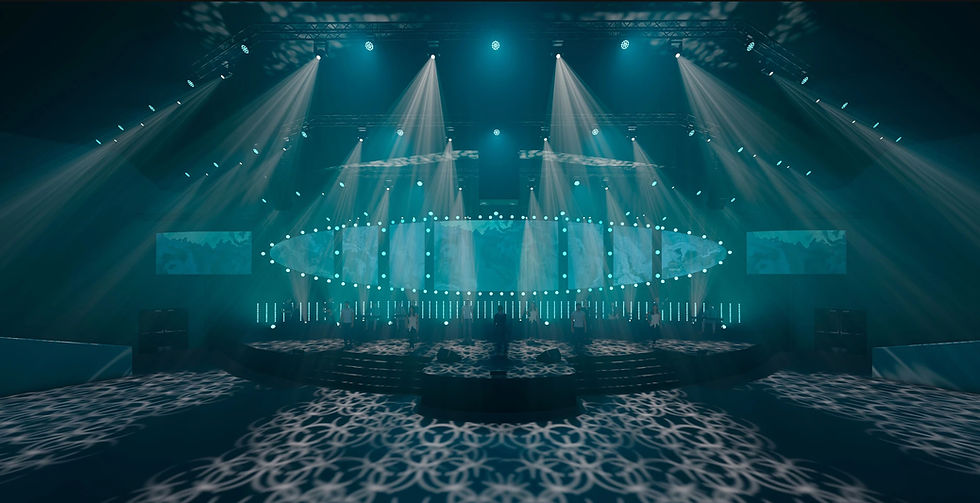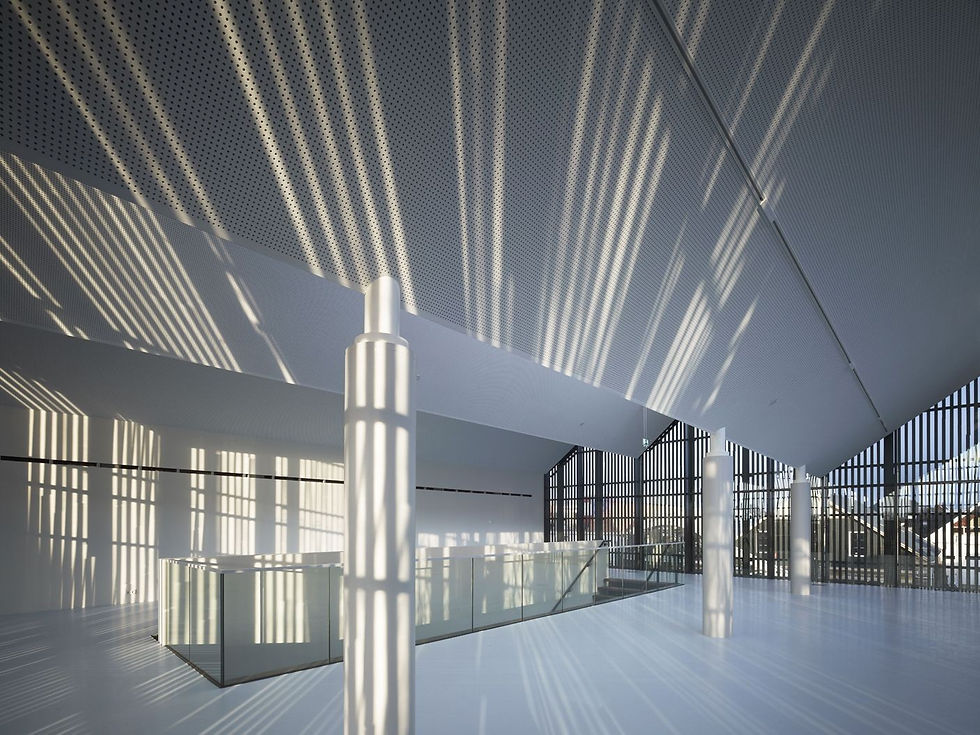From Vision to Reality: The Art of Church Stage Design
- Dustin Diehl

- Oct 26, 2024
- 5 min read
At The Church Guys, stage design is more than just setting up equipment—it’s about crafting a flexible, functional, and visually engaging environment that enhances the worship experience. Our approach focuses on combining practicality with creativity, ensuring that each design is adaptable, cost-effective, and aligned with the vision of the church. In this post, we’ll walk you through our process, offer practical tips you can apply, and share some examples from our own projects. Whether you’re looking for a full redesign or small updates, this guide will help you think through the elements of a successful stage design.
The Planning Process: From Concept to Execution
The first step to any successful stage design is getting accurate measurements of the room. That’s where we always begin. No matter the size of the stage or the complexity of the design, understanding the space is critical. We take detailed measurements and use them to craft both a 2D plan and a 3D rendered room. This gives us and our clients a clear visual of what the design will look like once installed. It also allows us to experiment with different configurations, ensuring that the design fits both the physical space and the church’s needs.
When you’re working on your own stage design, even a simple hand-drawn sketch can go a long way. People are visually driven, so providing any kind of visual reference can help leadership and volunteers understand the goals and ideas you’re presenting. Getting everyone on the same page early in the process makes collaboration smoother and ensures that everyone is working toward a common vision.


Once we’ve mapped out the room and have a basic concept, we move into the collaboration phase. Multiple meetings with church leadership help us ensure the design aligns with the church’s vision. It’s not just about what looks good but also what will serve the purpose of the space—whether that’s enhancing worship, improving the visual experience for the congregation, or supporting a specific theme. We ask detailed questions about the church’s culture, services, and technical needs. This step is critical because it ensures that we’re creating a design that feels unique to each church.
Here’s a practical tip: When approaching leadership with stage design ideas, come prepared with visuals and a clear explanation of how the design will enhance the church’s goals. Be open to feedback and make sure your design supports the broader vision of the ministry.
After the concept is finalized, it’s time for the technical details. We don’t just stop at the big picture—we get granular, accounting for every light, cable, clamp, and rigging element. Everything, down to the last nut and bolt, is carefully planned. This meticulous attention to detail allows us to avoid surprises and setbacks during installation. We create a comprehensive checklist to make sure all gear is accounted for, and we complete a full plan set, which includes every view of the room and every light and rigging location.
When you’re tackling a stage design project, even if it’s on a smaller scale, planning out every detail can save you a lot of time and headaches later. Try creating your own checklist of equipment and materials to make sure nothing is overlooked.
Finally, we create a step-by-step installation guide. This is reviewed with our team to ensure everyone knows their role and expectations before we even arrive on-site. If the church has volunteers involved in the process, we hold a meeting first thing on-site to assign tasks and walk everyone through the plan. This extra step ensures that everyone is confident and ready to contribute to the project’s success.
Flexibility: Why It Matters in Stage Design
One of the most important aspects of stage design, and something we always emphasize, is flexibility. A stage that’s too static or rigid can limit what you can do in the future. That’s why we focus on creating designs that are modular, adaptable, and easy to update. Whether it’s repositioning lighting, moving scenic elements, or adjusting the LED walls, flexibility allows churches to refresh the stage without the need for a complete overhaul.
For example, many of our designs use modular scenic elements that can be easily moved, rearranged, or replaced, giving churches the ability to adapt their stage to different seasons, sermon series, or special events. By focusing on flexibility from the beginning, we help churches get the most out of their stage design over time, without having to commit to permanent installations that are difficult or expensive to change.

You don’t need a huge budget to achieve flexibility, either. With the right planning, even affordable gear can be used in creative ways to build a dynamic, changeable stage setup. Early on at Evangel, we used affordable Chinese light fixtures. They weren’t the most expensive or feature-packed lights available, but by carefully positioning them and using creative angles, we were able to get a stunning look without breaking the bank.
Bringing It All Together: Lighting, LED Walls, and Scenic Elements
Creating a unified, immersive experience is about more than just setting up individual pieces—it’s about how all the elements come together. At The Church Guys, we focus on blending lighting, LED walls, and scenic elements into a complete, finished product that supports the church’s vision.
Lighting plays a huge role in shaping the atmosphere of a stage. At our home church, Evangel, we know there are a few design staples that the leadership always expects. One is a large LED wall that plays back 16x9 video—this is central to the visual experience. It’s not just about having a big screen, though. It’s about making sure the content on that screen works with the lighting and scenic elements around it. We use textured lighting to fill in any black spaces or empty areas on stage, which helps create a more dynamic, visually interesting environment.

Key lighting is another crucial element. Whether it’s for the speaker or the musicians, making sure the stage is well-lit is key to keeping the focus where it should be. Key lighting also adds depth to the stage, making it feel three-dimensional and more engaging for the audience.
Bringing all of these elements together—lighting, LED walls, and scenic pieces—creates a cohesive stage that serves not just as a backdrop but as an integral part of the worship experience. A well-designed stage helps guide the congregation’s attention and enhances the overall message being presented.
Where We Draw Inspiration
Inspiration is everywhere, and when it comes to stage design, we’re constantly drawing from different sources. We take cues from lighting designers across the industry, as well as from art, architecture, and entertainment. The goal isn’t to copy someone else’s design but to take pieces we admire and make them our own.
For example, we might see a lighting setup at a concert or event and adapt it for a church setting, tweaking the colors and intensity to match the mood of the service. Or we might visit an art installation that plays with light and shadow in creative ways, inspiring us to recreate that effect on stage with textured lighting. The possibilities are endless when you’re open to pulling inspiration from a variety of places.

We encourage anyone working on stage design to keep their eyes open for ideas, whether from other churches, concerts, or even art galleries. By combining these influences, you can create something that’s truly unique and perfectly suited to your church’s needs.
Let’s Work Together
If you’re considering a new stage design for your church, or just looking for ways to refresh your current setup, we’d love to help. Whether you need a complete design overhaul or just a few tips and ideas, we’re here to offer our expertise. Even if we’re not the ones leading your project, we’re happy to provide guidance and answer any questions you might have. Sometimes, all it takes is a little advice to turn your vision into reality.

Comments